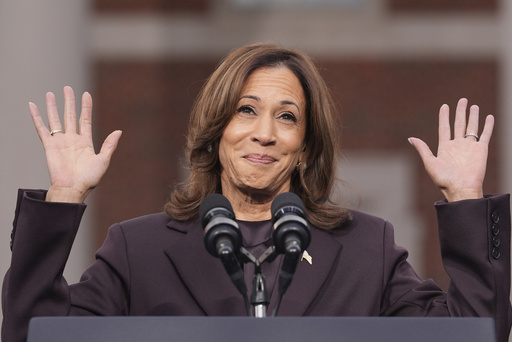
The current political landscape presents a significant challenge for Democrats as Donald Trump’s electoral support has noticeably increased since his previous presidential bid. In a recent defeat of Democrat Kamala Harris, Trump achieved a stronger share of the overall vote in all 50 states and Washington, D.C., compared to four years prior. An analysis reveals that he garnered more actual votes than in 2020 across 40 states. Harris’ loss can be attributed, in part, to her more than 7 million-vote decrease from President Joe Biden’s total in the 2020 election, particularly in key swing states, which have historically been strongholds for the Democratic Party.
Despite a drop in national voter turnout compared to the highly charged 2020 election, Trump still managed to secure an additional 2.5 million votes. He achieved substantial victories in the seven most competitive states, paving the way for a significant Electoral College win, with Trump becoming the first Republican candidate in two decades to win a majority of the popular vote. His performance particularly impacted areas where Harris needed an exceptional turnout to ensure a tight race, prompting Democrats to strategize for regaining their foothold ahead of the upcoming midterm elections, where control of Congress and numerous governorships will once again be contested.
Several critical factors contributed to Trump’s success. Notably, he made considerable inroads in Northern metropolitan counties, especially those surrounding the cities of Detroit, Milwaukee, and Philadelphia. These urban centers, crucial for Democratic victories in industrial swing states like Michigan, Wisconsin, and Pennsylvania, did not perform well for Harris. She experienced declines of over 50,000 votes in Wayne County, Michigan, and around 36,000 in Philadelphia County, Pennsylvania, along with a minor shortfall in Milwaukee County, Wisconsin.
Even with Harris campaigning vigorously in these urban areas, her performance did not mirror Biden’s achievements four years ago. In fact, Trump benefitted by adding to his 2020 vote totals in all three metro counties—netting over 24,000 in Wayne, more than 11,000 in Philadelphia, and nearly 4,000 in Milwaukee. It remains unclear whether Harris’s lower turnout was due to Biden supporters choosing to abstain or defecting to Trump, but her struggles in these key demographics were pivotal in Trump’s overall success. Campaign efforts were extensive from Harris, including her initial rally in Milwaukee County as a candidate, though the lack of sufficient improvement in these metropolitan areas played into Trump’s strategy, who maintained strong margins in rural locales and suburban regions.
Data reflected that Trump’s campaign was successfully gaining traction with Black voters, especially among younger Black men. His political director observed significant shifts in voter turnout and engagement in Philadelphia, indicating opportunities forTrump’s campaign moving forward. A nationwide survey indicated that Trump captured a larger portion of Black and Latino voters compared to 2020, particularly among men under 45, even as Harris won Senate races in the states mentioned while facing challenges in others.
Additionally, despite initial excitement surrounding Harris’ candidacy upon her entry into the race, she ultimately garnered fewer votes than Biden in a majority of the competitive states where she focused her campaigning efforts. In Arizona alone, her voter count was about 90,000 lower than Biden’s, while she also fell short by roughly 67,000 in Michigan and around 39,000 in Pennsylvania. Although she performed better in other states—Georgia, Nevada, North Carolina, and Wisconsin—the gap between Trump’s increased support and her lagging count was conspicuous.
Specifically, in Georgia, where Trump successfully added over 200,000 votes to his 2020 count, it was evident that despite Harris receiving more than Biden in votes, Trump’s growth was significant enough to secure the state. In Wisconsin, the Trump campaign strategically targeted working-class areas, resulting in notable gains among traditionally Democratic voters. His focus on Rock County particularly illustrated Trump’s appeal to middle-income, non-college-educated voters.
Arizona saw the lowest increase in overall votes cast in the presidential election among competitive states, despite numerous campaign stops and hefty expenditures from both parties. Harris’ numbers fell short of Biden’s across various county sizes, while Trump improved his margins in all counties. Notably, Harris experienced a drop of over 60,000 votes compared to Biden, predominantly in Maricopa County, which contributed to Trump winning Arizona after narrowly losing it in 2020.
Furthermore, shifts to the right were observed even in heavily Democratic regions, where Wayne County in Michigan swung nine points toward Trump. Surveys indicated that economic issues are considered paramount among voters in the upcoming election. As the political climate intensifies, strategists emphasize the need for Democrats to reformulate their economic messaging to resonate more effectively with constituents on a broad scale. The upcoming governorship races in 2026 may serve as an essential test for the Democrats’ messaging and connection to voters to ensure clearer communication of their economic strategy moving forward.
